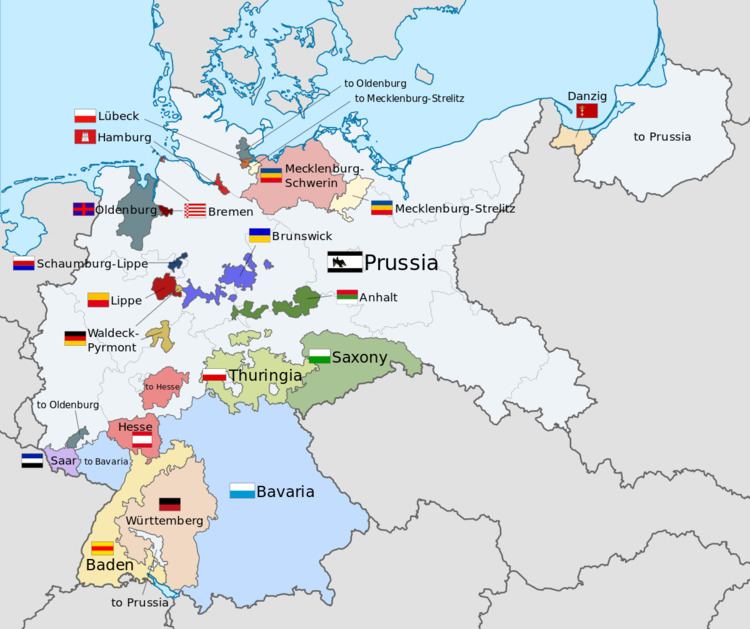 | ||
Upon the conclusion of World War I, Germany suffered significant territorial losses from the Treaty of Versailles. After the German Revolution, the 21 constituent states of Germany abolished their monarchies and continued as republics alongside the three pre-existing city-states within the new Weimar Republic. The former Ernestine duchies continued briefly as republics before merging to form the state of Thuringia in 1920, except for Saxe-Coburg, which became part of Bavaria. Additionally, the Saar Basin and the city of Danzig were detached from Germany and placed in the care of the League of Nations.
These states were effectively abolished under the Nazi regime by a series of Reichsstatthalter decrees between 1933 and 1935, which caused them to be superseded by Nazi provinces called Gaue. Many of the states were formally dissolved by the Allies at the end of World War II and ultimately re-organised into the modern states of Germany.
Other territories
After World War I, the Saar Basin was occupied and governed jointly by the United Kingdom and France from 1920 to 1935 under a League of Nations mandate. After a plebiscite was held in 1935, the region was returned to Germany.
In accordance with the Treaty of Versailles, the city of Danzig (now Gdańsk, Poland) was detached from Germany on 15 November 1920 and turned into a semi-autonomous city-state under the protection of the League of Nations. The Treaty stated that it was to remain separate from both Germany and the newly independent Poland, but was not its own sovereign state. After the Nazis invaded Poland in September 1939, the city's autonomous status was revoked and it was annexed by Germany.
